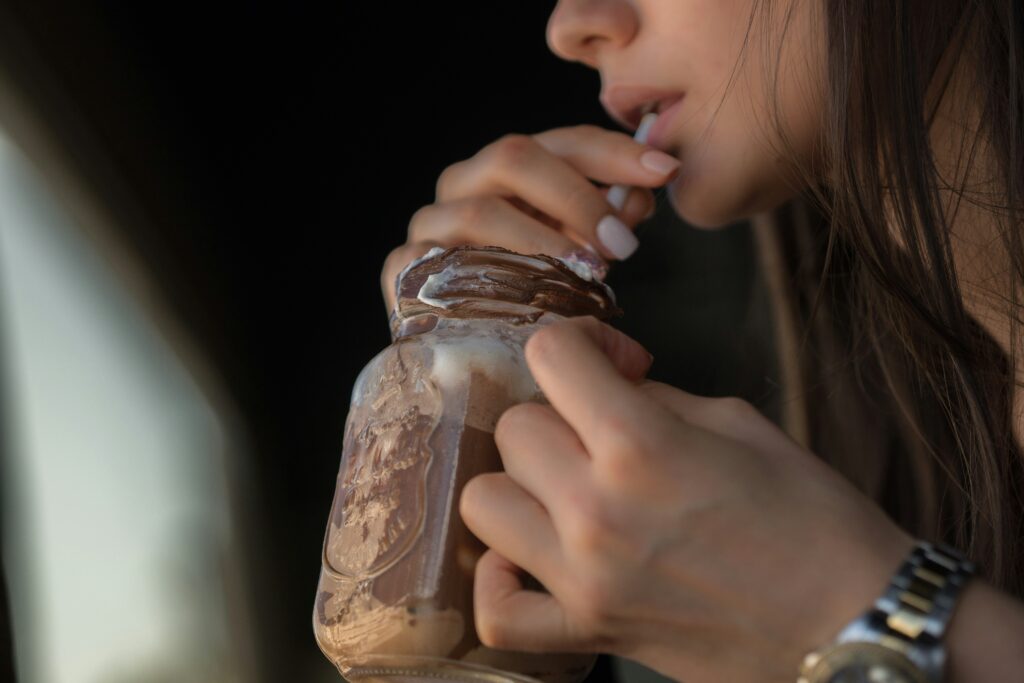
The Protein Drama in Tennis
This is the common question I got as a performance coach , thought of elaborating a bit so that tennis players and coaches can do their due diligence and make informed discian with their health care provider
As we all know Tennis is a brutal physiological challenge—a sport where at pro level matches can last 5+ hours in extreme heat, demanding explosive power and endurance. Unlike team sports, tennis players bear sole responsibility for their physical readiness, making nutritional strategies critical for sustained performance. Protein supplementation has become the trending topic yet few players understand its complexities. Lets simply to understand it better.
What are Protein Fundamentals:
- Muscle Repair : During matches, muscle protein degradation exceeds synthesis, causing micro-tears that require amino acids for repair them
- Energy Source : Provides 5-10% of energy during prolonged matches when glycogen depletes
- Hormone Regulator: Influences insulin, glucagon, and growth factors governing recovery
Types of Protein Supplements
Not all proteins are created equal as tennis player you need to understand the requirement , tolerance and type >
A. Animal-Based Proteins
- Whey:
- Types: Concentrate (30-80% protein), Isolate (≥90%), Hydrolysate (predigested)
- Advantages: Rapid absorption (peak 60-90 mins), rich in leucine, boosts glutathione (antioxidant)
- Tennis Application: Ideal post-match when rapid recovery is needed before next-day play
- Casein:
- Properties: Slow-digesting (4-6 hour release), micellar structure
- Advantages: Sustained amino acid delivery, reduces muscle breakdown during sleep 8
- Tennis Application: Pre-bedtime dose for overnight recovery during tournaments
- Beef Protein:
- Source: Hydrolyzed bovine collagen/meat
- Advantages: Dairy-free, contains collagen for joint health 8
- Caution: Often less researched than dairy proteins
B. Plant-Based Proteins
- Soy: Complete protein, lowers LDL cholesterol, may reduce blood pressure
- Pea/Rice Blends: Combined to form complete amino acid profile, easily digestible
- Hemp: Rich in omega-3s but low in lysine (incomplete alone)
| Type | Digestion Speed | Leucine % | Best Use Timing | Tennis Benefit |
| Whey Isolate | Very Fast (1h) | 10-12% | Post-match | Rapid muscle repair |
| Casein | Slow (4-6h) | 8-9% | Bedtime | Overnight recovery |
| Soy | Moderate (2-3h) | 8% | Between matches | Cardioprotective during stress |
| Pea-Rice Blend | Moderate-Fast (1.5h) | 7-8% | Pre-training | Gentle energy without bloating |
The Benefit for Tennis Players
Protein supplements offer tennis-specific advantages if you use them correctly :
- Accelerated Recovery:
- 20-25g whey post-match reduces muscle soreness by 40% within 24 hours versus carbs alone
- BCAAs (particularly leucine) directly stimulate mTOR pathway for protein synthesis.
- Hydration Support:
- Electrolyte-enhanced proteins aid sodium retention during sweat losses >5L/hour
- Injury Resilience:
- Collagen peptides (in beef protein) improve tendon elasticity—critical for shoulder and knee health
- Immune Protection:
- Whey immunoglobulins reduce upper respiratory infections during intense travel periods
The Hidden Risks: What Tennis Players must know
A. Contaminants & Doping Dangers
- Alarming Stats: 1 in 10 supplements contain undeclared banned substances
- Real Case: In 2019, 8% of anti-doping violations stemmed from contaminated supplements
- Solution: Use batch-tested certifications:
- Informed Sport
- NSF Certified for Sport
- BSCG
B. Health Impacts could effect your tennis career.
- Kidney Stress:
- Doses >40g/day cause hyperfiltration, increasing urinary calcium excretion—risky for players with undiagnosed kidney issues
- BCAA Overdose Dangers:
- Excess BCAAs compete with tryptophan transport, lowering serotonin → increased appetite → obesity risk
- Linked to insulin resistance and cardiovascular strain in long-term misuse
- Toxic Additives:
- Artificial dyes (Red #40, Blue #1) found in flavored powders:
- Hyperactivity and attention issues
- Gut inflammation in animal studies
- Heavy metals: Some powders contain lead/cadmium at 25x safe limits
- Artificial dyes (Red #40, Blue #1) found in flavored powders:
| Additive | Common Forms | Health Risks | Tennis Performance Impact |
| Artificial Dyes | Red #40, Blue #1 | Gut inflammation, hyperactivity | Reduced focus during long matches |
| High-GI Sweeteners | Maltodextrin, Sucrose | Blood sugar spikes (>23g/scoop) | Energy crashes mid-match |
| Emulsifiers | Carrageenan, Polysorbate 80 | Gut barrier disruption | Increased travel-related GI distress |
Age-Specific Protocols
Junior Players (Under 18):
- Whole Food Focus: Prioritize Greek yogurt, eggs, chicken over powders
- Max Safe Dose: 0.8-1.2g/kg/day total protein (supplements ≤10% of intake)
- BCAA Ban: Avoid entirely—linked to developmental disruptions
Adults (18-35):
- Competition Phase: 1.6-1.8g/kg/day (20-25g post-match + casein at night) 3
- Travel Tip: Single-serve plant proteins avoid customs issues with liquids/powders
Masters Players (35+):
- Anabolic Resistance Protocol: 25-30g per dose to overcome age-related blunting
- Kidney Check: Mandatory eGFR blood test before supplementation 9
Gender-Specific Considerations
Female Tennis Players:
- Iron Interference: Whey/casein may inhibit non-heme iron absorption—time doses away from iron-rich meals
- Lower Calorie Needs: Opt for isolates over concentrates to avoid excess fats/carbs
Male Tennis Players:
- Prostate Caution: Soy protein lowers IGF-1 (possibly protective), but monitor PSA if genetically predisposed
- Higher Threshold: Tolerate up to 2.5g/kg/day during Pro tour
The Blood Tests are Essential
Pre-Supplement Labs Every Player Needs:
- Kidney Function: eGFR, creatinine, BUN
- Amino Acid Panel: Identify deficiencies (e.g., lysine) to personalize type
- Fasting Glucose: Protein impacts insulin sensitivity—baseline is critical
- Liver Enzymes: ALT/AST—high protein exacerbates fatty liver if present
- Always consult your Medical Doctor prior to taking supplement .
Match vs. Training Protocols
Tournament Days:
Pre-Match: 15g plant protein + carbs (oats) 2hr before—prevents gastric distress
Changeovers: Never pure protein—use carb-electrolyte mix with 5g BCAAs if >2hr match
Post-Match: 20g whey isolate + 40g high-GI carbs within 45min window
Training Days:
- Low-Intensity: Focus whole foods—cottage cheese, fish, legumes
- Strength Sessions: Casein pre-workout (30g) sustains amino delivery during lifts
- HIIT Drills: 10g EAAs during session preserves muscle under glycogen depletion
Certification & Selection Checklist
Ensure your supplement passes this tennis-specific vetting:
- Third-Party Testing: Batch-specific report accessible via QR code
- Artificial Dye-Free: Colors only from beet/vegetable juice
- Low FODMAP Certified: Reduces travel-related bloating
- Sodium Inclusion: ≥100mg/serving to replace sweat losses
- Transparency: Full ingredient disclosure—no “proprietary blends”
Top Certified Brands: Informed Sport lists over 2,000 verified products
The Food-First
Prioritize these whole-food combos before supplements:
- Post-Match Recovery: Salmon (22g protein) + sweet potato (carbs) + asparagus (glutamine)
- Travel Snack: Hard-boiled eggs + salt packet (sodium replenishment)
- Quick Fix: Greek yogurt + berries + honey (optimal 3:1 carb:protein)
The Smart Protein Protocol
Protein supplements can benefit tennis players when used as targeted tools—not the main source. The keys are:
- Test First: Blood work and physician consultation are non-negotiable
- Certify Religiously: Your career is worth the $5 premium for batch-tested products
- Time Precisely: Match/training needs demand distinct protocols
- Respect Limits: More ≠ better—kidney and metabolic health trump marginal gains
As tennis physiologist Dr. Kovacs emphasizes: “The intermittent nature of tennis places unique demands on protein metabolism. Players require precision dosing—not blanket recommendations.”
Explore Your Certified Options:
“In an era where 70% of supplements are contaminated, your vigilance determines your viability.” — International Tennis Integrity Unit
If you need quick access to few supplements
https://www.amazon.com/shop/ranilharshana/list/3BCJCA3IIRA9D?ref_=aipsflist
Tennis Fitness book https://www.amazon.com/tennis-fitness/dp/1492867969
Tennis Wellness & Performance Book https://www.amazon.com/dp/B0DPL48X51
Reference :
https://sport.wetestyoutrust.comhttps://www.usada.org/
https://choice.wetestyoutrust.com/supplement
- Ranchordas, M.K., et al. (2013). Nutrition for Tennis: Practical Recommendations. Journal of Sports Science & Medicine, 12(2), 211–224.
- Ju, Y. (n.d.). Protein Intake as a Muscle-Fatigue-Recovery Strategy after Tennis. National Tennis Organization.
- Jäger, R., et al. (2017). International Society of Sports Nutrition Position Stand: Protein and Exercise. Journal of the International Society of Sports Nutrition, 14:20.
- Tang, J.E., et al. (2009). Ingestion of Whey Hydrolysate, Casein, or Soy Protein Isolate: Effects on Muscle Protein Synthesis. Journal of Applied Physiology, 107(3), 987–992.
- Messina, M., et al. (2023). Soy Protein and Cardiovascular Risk. Nutrients, 15(7), 1642.
- Williams, M.B., et al. (2024). Protein Co-Ingestion with Carbohydrate Augments Glycogen Storage. Frontiers in Nutrition, 11:1455728.
- Sell, K., et al. (2024). Illness Incidence in Elite Tennis Players. Aspetar Sports Medicine Journal
- Zenic, N., et al. (2013). Sport Nutrition and Doping in Tennis. Journal of Sports Science & Medicine, 12(2), 290–297.
- Karpouzi, A., et al. (2025). Protein Supplementation in High-Intensity Functional Training. Exercise and Sport Sciences Reviews, 5(2),
- Ranchordas, M.K., et al. (2013). Op. cit.
- Kovacs, M.S., et al. (2009). Tennis Recovery: A Comprehensive Review. USTA.
- Jeukendrup, A., & Gleeson, M. (2024). Sport Nutrition, 4th Edition. Human Kinetics.
- Knuiman, P., et al. (2023). Protein Supplementation: The Double-Edged Sword. PMC, doi:10.1080/08998280.2023.2280417
- Pluim, B. (2024). Medical Issues Affecting Tennis Performance. Aspetar Sports Medicine Journal,


